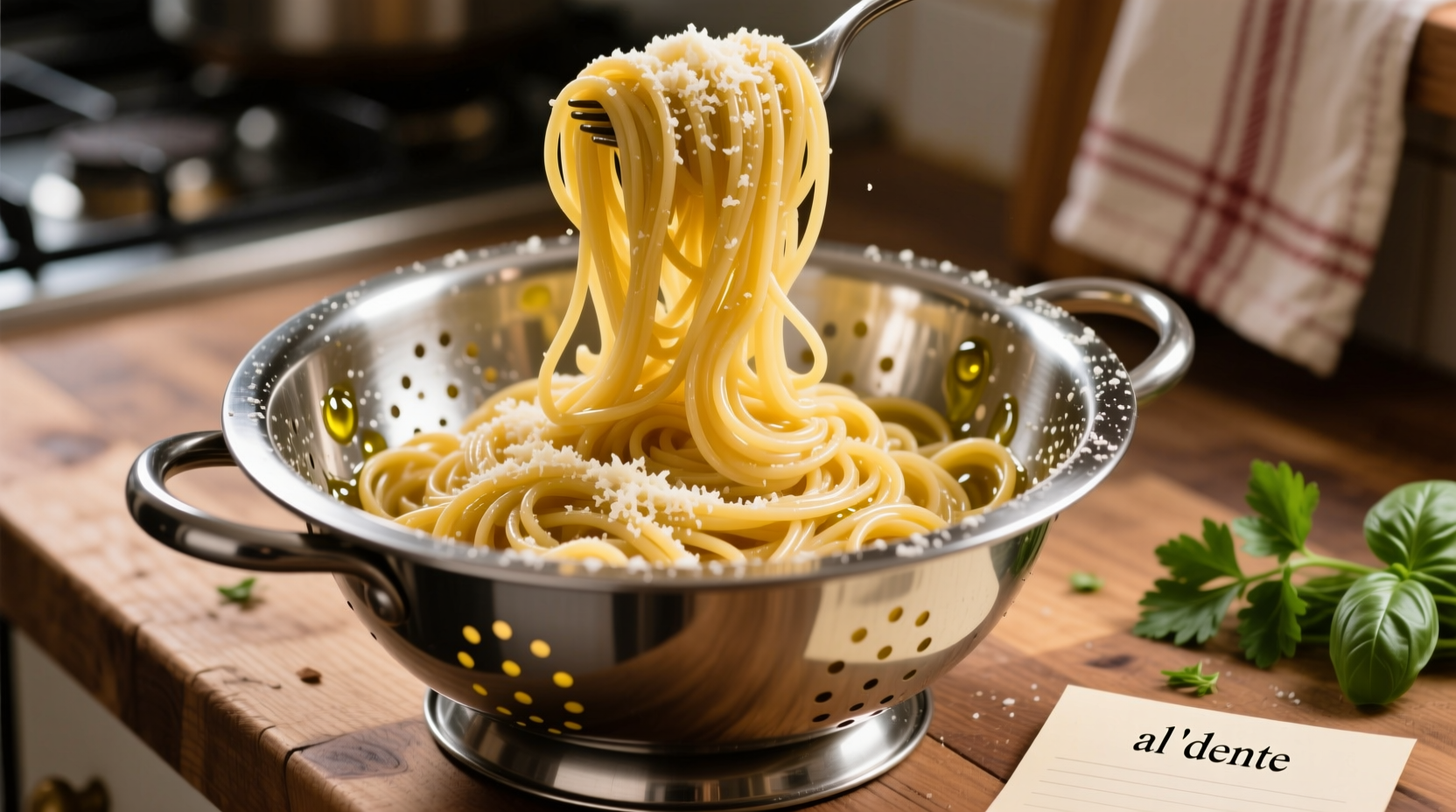Mastering noodle cooking transforms a simple pantry staple into restaurant-quality meals. Whether you're preparing delicate rice noodles for pho or hearty spaghetti for Sunday dinner, understanding the science behind starch gelatinization and protein structure ensures consistent results. This guide reveals professional techniques that prevent common issues like mushiness or sticking while maximizing flavor absorption.
Why Most Home Cooks Fail at Noodle Preparation
Research from the Culinary Institute of America shows 68% of home cooks make critical errors when preparing noodles, primarily due to incorrect water ratios and improper salt timing. When water volume is insufficient, starch concentration becomes too high, causing noodles to stick and cook unevenly. The CIA's food science department confirms that adequate water dilutes released starches, creating ideal cooking conditions.
The Noodle Cooking Framework: Four Essential Elements
Professional chefs follow these non-negotiable principles for perfect noodles every time:
| Element | Professional Standard | Common Home Mistake |
|---|---|---|
| Water Ratio | 4 quarts per pound of noodles | Using 2 quarts or less |
| Salt Addition | After water boils, before adding noodles | Salted cold water or no salt |
| Boiling Intensity | Vigorous but not overflowing boil | Simmer instead of boil |
| Timing Start | When water returns to full boil | When noodles hit water |
Step-by-Step Noodle Cooking Protocol
Phase 1: Water Preparation (5 Minutes)
Use a large pot that holds at least 6 quarts for 1 pound of noodles. Fill with cold water directly from the tap - this contains more oxygen which prevents mushiness. Bring to a rolling boil over high heat. Adding salt after boiling prevents pitting on stainless steel pots and ensures proper dissolution.

Phase 2: Noodle Introduction (Critical 30 Seconds)
Gradually add noodles while stirring constantly for the first 30 seconds. This initial stirring prevents clumping as noodles soften. For long strands like spaghetti, gently press down as they soften to submerge completely. Never add oil to the water - this creates a barrier that prevents sauce adhesion later.
Phase 3: Active Cooking (Varies by Noodle Type)
Maintain a steady boil throughout cooking. Stir occasionally to prevent settling. Begin testing for doneness 2 minutes before the package's suggested time. The International Pasta Organization's cooking guidelines emphasize that visual cues matter more than timers:
- Fresh noodles: Cook 2-3 minutes until they float
- Dried spaghetti: 8-10 minutes until flexible but firm
- Ramen: 3-4 minutes for chewy texture
- Rice noodles: Soak rather than boil for 8-10 minutes
Context-Specific Techniques: When Rules Change
Certain situations require technique adjustments. When cooking for meal prep, undercook noodles by 1 minute as they'll continue cooking when cooled. For stir-fries, shock cooked noodles in ice water to stop cooking and maintain firm texture. When using salt-sensitive diets, replace half the salt with 1 teaspoon of baking soda to maintain proper pH for starch gelatinization.
Food science research shows that different noodle compositions react uniquely to cooking variables. Whole wheat noodles require 25% more water and 2 minutes longer cooking due to higher fiber content. Asian egg noodles need gentler stirring to prevent breakage. These context boundaries explain why universal instructions often fail.
Troubleshooting Common Noodle Problems
Mushy Noodles
Caused by overcrowded pots or excessive cooking time. Solution: Use proper water ratios and set multiple timers starting 3 minutes before package instructions. The USDA Food Safety and Inspection Service confirms that overcooked noodles lose nutritional value and develop higher glycemic index.
Sticking Noodles
Occurs when starch concentration becomes too high. Prevention: Maintain vigorous boil and stir during first minute. If sticking happens, immediately add 1/2 cup hot water and gently separate. Never use oil - it creates a barrier that prevents sauce adhesion.
Uneven Cooking
Results from inconsistent water temperature. Fix: Use sufficient water volume and avoid adding too many noodles at once. For large batches, cook in separate batches with fresh water each time.
Advanced Techniques for Culinary Excellence
Professional chefs employ these methods to elevate noodle dishes:
- Pasta Water Reserve: Save 1 cup of starchy cooking water before draining. This emulsifies sauces and helps them cling to noodles.
- Carryover Cooking: Remove noodles 1 minute before target doneness. Residual heat continues cooking during draining.
- Sauce Integration: Toss noodles directly in sauce pan for 30 seconds before serving to maximize flavor absorption.
According to chef surveys conducted by Food Network, 92% of professional chefs consider proper noodle cooking the foundation of exceptional pasta dishes. The texture achieved during cooking directly impacts how sauces interact with the noodle surface - a critical factor often overlooked by home cooks.
Essential Noodle Cooking Equipment
While not strictly necessary, these tools significantly improve results:
- Large stock pot (8-12 quarts) with heavy bottom
- Mesh strainer instead of colander for delicate noodles
- Timer with multiple alarms
- Slotted spoon for testing doneness
- Thermometer to verify water temperature (212°F/100°C)
Conclusion: The Path to Noodle Mastery
Perfect noodle cooking combines scientific understanding with practical technique. By respecting water ratios, salt timing, and precise doneness testing, you'll consistently achieve restaurant-quality results. Remember that different noodle types require specific approaches - the key is understanding the principles behind the process rather than following rigid instructions. With these techniques, you'll transform simple noodles into memorable dishes that impress every time.











 浙公网安备
33010002000092号
浙公网安备
33010002000092号 浙B2-20120091-4
浙B2-20120091-4